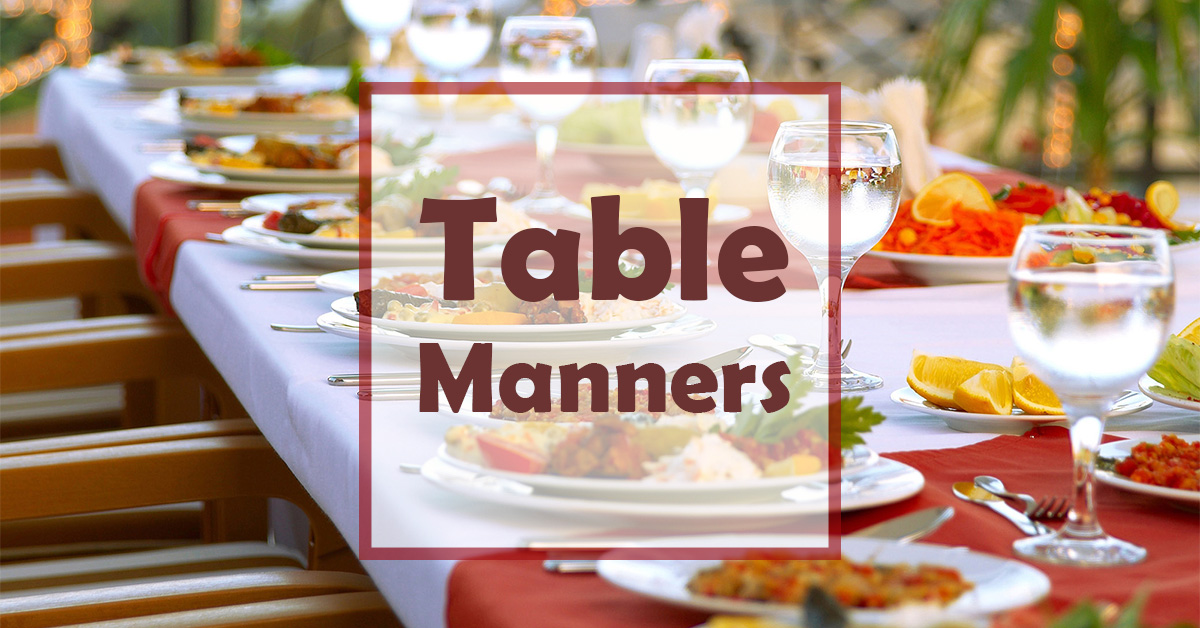
Around the world, people get together to eat lunch or dinner. The certain rules at the table include how to use a knife, fork or spoon correctly, or when to ask to be served. All these rules are called table manners(礼仪). These rules change from one culture to another, so what is considered to be polite in one culture can be seen as very rude in another. So it wouldn’t be a bad thing to learn about table manners.
In some countries in Europe and North America, for example, France, you might be advised to always rest your hands on the table while you are not using a knife or fork to eat. Keeping your hands under the table where nobody can see them is considered a bad dining manner. “ ▲ ” is one of the basic(基础的) dining rules in these areas. Why is that? Some people guess this tradition started because people were afraid of what other people might be doing under the table, like holding a gun.
In some countries like Ethiopia, traditionally, the food is eaten with hands, usually from a large plate. Several delicious meals are put together on a plate and the guests sit around it. The proper way to eat them is to get a piece of the bread, and then some food that is close to you with it, and put it in your mouth. Because you are touching the food with your hands, make sure that you always wash them before and after the meal. The left hand is considered unclean, so it is advisable and polite to only use your right hand to eat.
1.What does the underlined word “rude” mean?
A Funny.
B Impolite.
C Brave.
D Fantastic.
解析:选B。B词义猜测题。根据划线单词上文“These rules change from one culture to another”可知,餐桌礼仪在各种文化之间各不相同,结合“what is considered to be polite in one culture”可推测,在一种文化里面被视为很礼貌的行为,可能会在另外一种文化里被视为是“粗鲁、不礼貌”的。故选B。
2.Which of the following can be put back into the “ ▲ ”?
A Use a knife or fork to eat.
B Rest during table time.
C Hands on the table.
D Keep hands clean.
解析:选C。C推理判断题。根据第二段中的“you might be advised to always rest your hands on the table while you are not using a knife or fork to eat. Keeping your hands under the table where nobody can see them is considered a bad dining manner”可知,此处讲的是在欧洲和北美一些国家,把手放在餐桌上是基本的礼仪。故选C。
3.Which of the following is proper when eating in Ethiopia?
A Touch food with a fork.
B Put food on different plates.
C Always get the farthest food.
D Wash hands before and after meals.
解析:选D。D细节理解题。根据最后一段倒数第二句的“make sure that you always wash them before and after the meal”可知,在埃塞俄比亚,餐前餐后要洗手。故选D。
4.Why don’t people eat with their left hand in some countries?
A Because it’s difficult to eat with the left hand.
B Because eating with the left hand is not polite.
C Because the left hand is thought to be not clean.
D Because the left hand must be kept under the table.
解析:选C。C细节理解题。根据最后一段最后一句“The left hand is considered unclean, so it is advisable and polite to only use your right hand to eat.”可知,在有些国家,人们认为左手不干净,所以不用左手吃饭。故选C。
5.In which part of a newspaper can we most probably read this passage?
A Food.
B Culture.
C Travel.
D Health.
解析:选B。B推理判断题。根据全文内容可知,文章主要描述了不同国家不同的餐桌礼仪,故最有可能在“文化”版块读到本文。故选B。